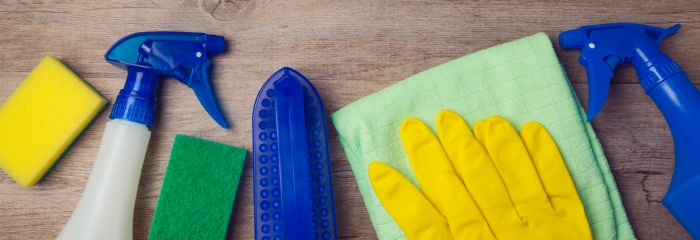
We all come to work hoping for a pleasant, clean and safe environment – and it makes good sense for employers to ensure this is the case if they want to have happy, healthy and productive employees. However, if your workplace falls short, then all too easily the opposite can apply with disenchanted staff who may be absent through ill health. This obviously has unwanted consequences for organisations who can find themselves under-staffed and therefore only operating at a fraction of their potential productivity.
It’s an issue Europe-wide and here we take a closer look at just who is most affected and the possible consequences that office hygiene – or lack of it – may have.

Sick days
In the UK alone between 2014 and 2015, an estimated 23.3 million working days were lost to ill health, with the average length of illness per person being 19 days . While it’s not possible to attribute all of these absences to poor office hygiene, it will certainly be true for a significant proportion of them. Typical causes of absence include communicable disease such as colds and flu, as well as conditions such as food poisoning and stomach upsets caused by poor hygiene practices.
Looking to Europe, figures showed that the country with the highest proportion of employees needing to take time off because of a work-related illness was Austria with 11%. The corresponding figures for the UK, France, Spain and Sweden were 2%, 5.8%, 2.6% and 7.6% respectively.
Problem areas in the office environment
Surprisingly, the most unhygienic areas of the office environment may not be what you might expect. In a number of pieces of research it has been found that it’s the office desk, and its surroundings, that can conceal harmful bacteria than more obvious areas such as a toilet. For example, studies have found that the average toilet seat harbours around 49 microbes per square inch while a computer keyboard can have up to 3,295 in the same area. Office telephones are another prime offender, with 25,127 microbes per square inch. Yet only 3% of offices sufficiently clean their equipment.
As the office environment is one in which there is a great deal of human interaction, bacteria can easily be passed from person to person – with the obvious consequences this entails.
European countries compared
There are great variations in illness rates throughout Europe though certain trends are possible to identify. In terms of the percentage of workers who have taken time off work for illness, 2013 HSE figures show that the Republic of Ireland fares best with just 1% and Austria is the worst with 11% .
Scandinavian countries also seem to have unexpectedly high rates of absenteeism in the public sector which some reports have attributed to the comparatively high level of sick pay offered in Sweden, Finland and Denmark. Similar patterns have also been spotted across the public sector in the UK.
How does it hit the bottom line.
Of course the key question for many countries, and even more organisations, is just how much absentees with work-related illness costs them. Again, there is great variation across Europe. In Germany, it is estimated to cost the country €73 billion – 3% of GDP - in lost productivity but the corresponding figure is only €32.8 billion (£27bn) in the UK.
Despite this wide range, neither are insignificant amounts for any size of economy to absorb and when it comes down to individual businesses, avoiding this waste is absolutely critical. Improved hygiene practices could go a long way to helping to solve this costly issue – it’s time to introduce a few small steps in your organisation that could have a positive effect.
You can call a Staples representative at the following number:
+44 (0) 121 322 1000
You can also fill out the form below and one of our representatives will get in touch with you shortly.